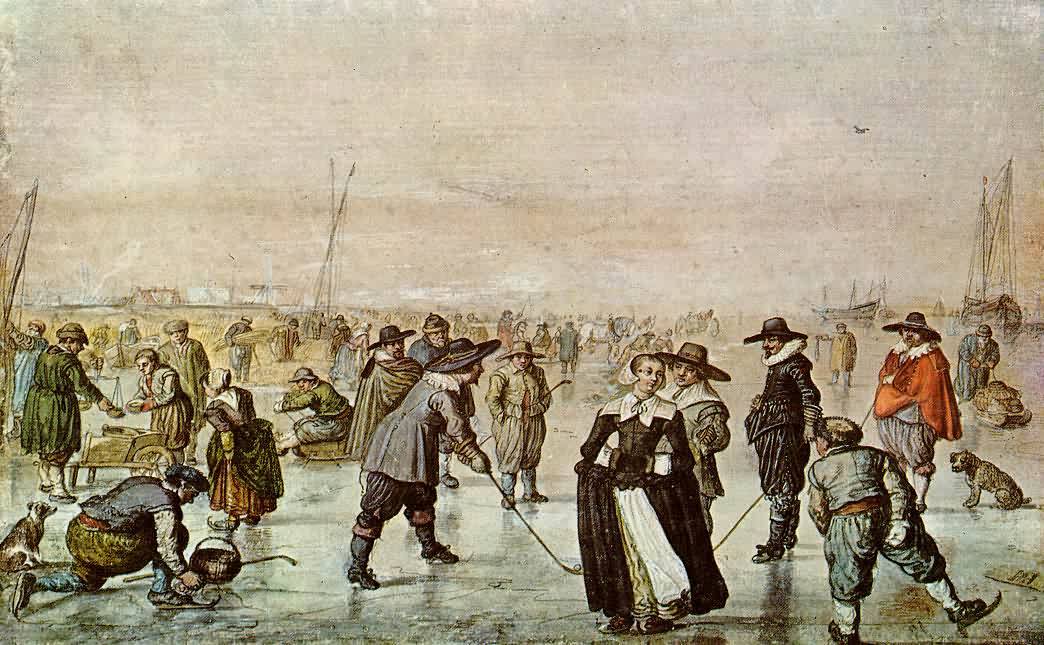|
Kite Ice Skating
Kite skating, sometimes referred to as ice kite skating, para-skating or para ice skating, is an ice-based sport using a large controllable kite A kite is a tethered heavier than air flight, heavier-than-air or lighter-than-air craft with wing surfaces that react against the air to create Lift (force), lift and Drag (physics), drag forces. A kite consists of wings, tethers and anchors. ... to propel ice skaters across frozen rivers, frozen lakes and other frozen surfaces. With a traditional diamond-shaped kite it's quite possible to go much faster than the wind speed by angling the kite much as a sailboat can trim its course and sails for greater speed. In fact, it's possible to exceed safe speeds quite easily, leaving one's legs exhausted from absorbing the shock of bumpy ice and becoming susceptible to spectacular crashes. On a gusty winter day one spends considerable time raising the kite in the air parallel to the ice or to the opposite direction of riding to slow down som ... [...More Info...] [...Related Items...] OR: [Wikipedia] [Google] [Baidu] |
Kite
A kite is a tethered heavier than air flight, heavier-than-air or lighter-than-air craft with wing surfaces that react against the air to create Lift (force), lift and Drag (physics), drag forces. A kite consists of wings, tethers and anchors. Kites often have a bridle and tail to guide the face of the kite so the wind can lift it. Some kite designs don’t need a bridle; box kites can have a single attachment point. A kite may have fixed or moving anchors that can balance the kite. The name is derived from kite (bird), kite, the hovering bird of prey. The Lift (force), lift that sustains the kite in flight is generated when air moves around the kite's surface, producing low pressure above and high pressure below the wings. The interaction with the wind also generates horizontal Drag (physics), drag along the direction of the wind. The resultant force vector from the lift and drag force components is opposed by the tension of one or more of the rope, lines or tethers to which t ... [...More Info...] [...Related Items...] OR: [Wikipedia] [Google] [Baidu] |
Ice Skating
Ice skating is the self-propulsion and gliding of a person across an ice surface, using metal-bladed ice skates. People skate for various reasons, including recreation (fun), exercise, competitive sports, and commuting. Ice skating may be performed on naturally frozen bodies of water, such as ponds, lakes, canals, and rivers, and on man-made ice surfaces both indoors and outdoors. Natural ice surfaces used by skaters can accommodate a variety of winter sports which generally require an enclosed area, but are also used by skaters who need ice tracks and trails for distance skating and speed skating. Man-made ice surfaces include ice rinks, ice hockey rinks, bandy fields, ice tracks required for the sport of ice cross downhill, and arenas. Various formal sports involving ice skating have emerged since the 19th century. Ice hockey, bandy, rinkball, and ringette, are team sports played with, respectively, a flat sliding puck, a ball, and a rubber ring. Synchronized skating ... [...More Info...] [...Related Items...] OR: [Wikipedia] [Google] [Baidu] |
Kiteskating During A Sunset
Kite skating, sometimes referred to as Kiteblading, is a land-based extreme sport that uses powerful and controllable kites to propel riders of inline skates or off-road skates. They can reach speeds up to 60+ mph across parking lots, desert dry lakes, grassy fields, and sandy beaches. Four-line, steerable para-foil kites are used as the power source. Typically used in rough terrain, kite skates use large pneumatic tires (8 to 12 inch diameter). Similar to Kite ice skating Kite skating, sometimes referred to as ice kite skating, para-skating or para ice skating, is an ice-based sport using a large controllable kite A kite is a tethered heavier than air flight, heavier-than-air or lighter-than-air craft with win .... External links Extreme Kites (www.ExtremeKites.com.au)Reviews, Videos, News, Buyers Guide, Professional Rider Interviews, Forums, Galleries & More. Doomwheels Kite SkatingHistory of kite skating, skate building instructions, learn to kite skate plus ... [...More Info...] [...Related Items...] OR: [Wikipedia] [Google] [Baidu] |
Kites
A kite is a tethered heavier than air flight, heavier-than-air or lighter-than-air craft with wing surfaces that react against the air to create Lift (force), lift and Drag (physics), drag forces. A kite consists of wings, tethers and anchors. Kites often have a bridle and tail to guide the face of the kite so the wind can lift it. Some kite designs don’t need a bridle; box kites can have a single attachment point. A kite may have fixed or moving anchors that can balance the kite. The name is derived from kite (bird), kite, the hovering bird of prey. The Lift (force), lift that sustains the kite in flight is generated when air moves around the kite's surface, producing low pressure above and high pressure below the wings. The interaction with the wind also generates horizontal Drag (physics), drag along the direction of the wind. The resultant force vector from the lift and drag force components is opposed by the tension of one or more of the rope, lines or tethers to which t ... [...More Info...] [...Related Items...] OR: [Wikipedia] [Google] [Baidu] |



.png)